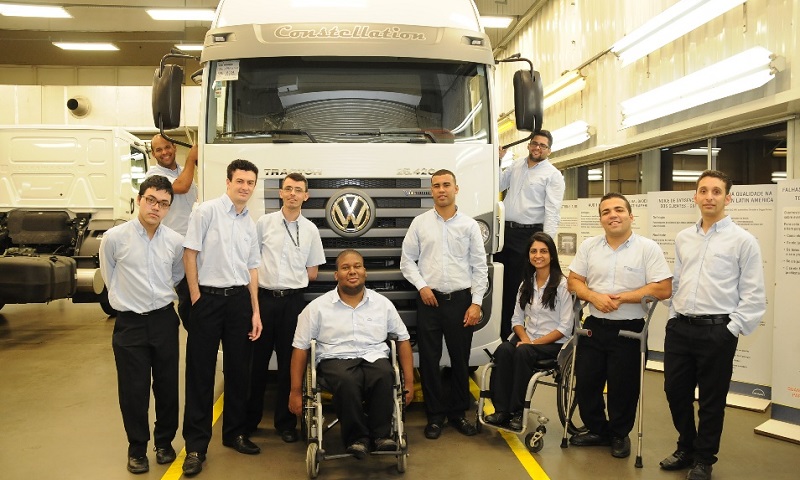
Information and Communications Technologies (ICT) play an increasingly important role in shaping the latest trends in Assistive Technologies (ATs) for the rehabilitation and social inclusion of persons with disabilities (PwD). However, lack of awareness and a weak support eco-system for ATs are barriers that still need to be overcome. This paper describes a practical case where ICT and innovation are being applied in the pursuit of better income and living conditions for PwD: the Center of Excellence for ICT and Innovation in favor of PwD (CETID), implemented by the State Secretariat for the Rights of the Person with Disability (SEDPcD) in Sao Paulo, Brazil.Sau
Sao Paulo's Policy in Support of PwD
Brazil is committed to promoting the rights of PwD, having ratified the UN Convention on the Rights of PwD (CRPD) and joined the Digital Inclusion Initiative.
To implement the CRPD, the State of Sao Paulo pays special attention to CRPD’s depiction of “accessibility” as a fundamental right of PwD, including specifically access to information and communication together with access to education, health and the environment. This is essential to allowing PwD to fully enjoy all human rights and fundamental freedoms. The government has an obligation to make the most of the opportunities offered by ICT to improve the lives and social inclusion of PwD.
Scope and Strategy of CETID
Sao Paulo’s SEDPcD sponsors the CETID, whose objective is to support the rehabilitation and social inclusion of PwD, by developing ICT-based solutions to a level where they can be applied widely in a cost-effective way[1]. CETID adopts and applies the concept and instruments of the Knowledge Economy (KE) through simultaneous investment in five areas: innovation; education; social inclusion; ICT; and enabling policies.
As the vast majority of PwD in Brazil live in poverty, CETID aims to increase their chance of finding adequate employment, thus becoming economically active and productive members of society. To do so, CETID pursues the following lines of work:
- Research: CETID attracts high level Brazilian and international experts to conduct research to improve skills, working conditions, and specific cognitive abilities of PwD, which could make them attractive and capable to the job market.
- Promotion: CETID identifies and develops job market niches to utilize the specific capabilities of PwD in cooperation with private sector enterprises looking to pursue this new source of specialized labor force for the benefit of their own private companies.
- Fund-raising: CETID Identifies financing mechanisms to support research, industrial innovation, education, training and job-generation, social structure adaptations.
- Dissemination: CETID disseminates knowledge about assistive technology for non-specialists and shares it through different means (forums, blogs, guidelines, websites)
Lessons Learned and Recommendations for the Future
Starting in 2010, the SEDPcD has been awarding local enterprises for including PwD within its workforce. In 2015, the Unimed Women’s Association (AMU) of Jau, Sao Paulo, was among those awarded the prize, recognizing the impact of its “Illuminated Life” project, which trains people who are blind or visually impaired and helps them find employment. Fabio Leal, one of the Association’s beneficiaries, learned to use digital musical equipment and found a job as a disk jockey. Dulcinea Ferreira, who has very limited vision, received training and found employment creating decorations on fabrics for the manufacturing of napkins. These are just a few examples that demonstrate the impact of social inclusion in PwD lives (See http://ocesp.org.br/default.php?p=noticias.php&id=12318).
The main lessons learned point at certain priority actions for the future:
- There are significant technological developments world-wide in terms of AT but there is still a huge gap between supply and demand in the market for AT products and services; that is, AT products and services are not reaching the great majority of PwD who could benefit from them. Part of the reason for this divide are prices that are inaccessible to lower-income PwD, but lack of knowledge and exposure also has significant weight; both obstacles must be tackled.
- Private sector companies, particularly when provided with information and facilitated by specific efforts such as CETID’s, are willing to incorporate human resource policies to include PwD a part of their personnel. It is the responsibility of the public sector to promote this outcome by providing adequate incentives and facilitating the process.
- Education and training to increase AT practitioners are priority actions, and there are a number of efforts among governmental and non-governmental organizations that deserve support in their efforts.
- Inter-agency collaboration is crucial to achieving positive results; participation by all levels of government and diverse sectors, multiplies the reach and success of an institutional effort such as CETID. These efforts must be sustained.
[1] Detailed information available at file:///C:/Users/Danilo/Documents/LINAMARA/CETID/CETID%20Concept%20Paper%20&%20Schematics.%20Final%20Report.htm
Appendix
SEDPD participates actively in international events and organizes its own where the objectives of CETID and other institutional efforts can be promoted. To celebrate the 10th anniversary of the Convention, SEDPD has organized a GLOBAL RECOGNITION EVENT: “GOOD PRACTICES FOR EMPLOYEES WITH DISABILITY” 2016 where private sector companies, leaders in PwD employment around the world, will be recognized. The winners will be celebrated at the UN Headquarters in New York, on December 2, 2016.

 Welcome to the United Nations
Welcome to the United Nations
